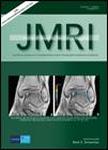版权所有:内蒙古大学图书馆 技术提供:维普资讯• 智图
内蒙古自治区呼和浩特市赛罕区大学西街235号 邮编: 010021

作者机构:Case Western Reserve Univ Dept Biomed Engn 10900 Euclid Ave Cleveland OH 44106 USA Univ Turku Dept Diagnost Radiol Turku Finland Icahn Sch Med Mt Sinai Dept Radiol New York NY 10029 USA Univ Turku Inst Biomed Turku Finland Turku Univ Hosp Dept Pathol Turku Finland Turku Univ Hosp Dept Urol Turku Finland Cleveland Clin Imaging Inst Sect Abdominal Imaging Cleveland OH 44106 USA Cleveland Clin Imaging Inst Nucl Radiol Dept Cleveland OH 44106 USA
出 版 物:《JOURNAL OF MAGNETIC RESONANCE IMAGING》 (磁共振成像杂志)
年 卷 期:2018年第48卷第6期
页 面:1626-1636页
核心收录:
学科分类:1001[医学-基础医学(可授医学、理学学位)] 1009[医学-特种医学] 10[医学]
基 金:National Cancer Institute of the National Institutes of Health [1U24CA199374-01, R01CA202752-01A1, R01CA208236-01A1, R01 CA216579-01A1, R01 CA220581-01A1, R21CA195152-01] National Center for Research Resources [1 C06 RR12463-01] DOD Prostate Cancer Idea Development Award DOD Peer Reviewed Cancer Research Program [W81XWH-16-1-0329] Ohio Third Frontier Technology Validation Fund Wallace H. Coulter Foundation Program in the Department of Biomedical Engineering Clinical and Translational Science Award Program (CTSA) at Case Western Reserve University National Cancer Institute [R01CA208236] Funding Source: NIH RePORTER
主 题:prostate cancer computer-assisted image processing magnetic resonance imaging recurrence projections and predictions
摘 要:Background Radiomics or computer-extracted texture features derived from MRI have been shown to help quantitatively characterize prostate cancer (PCa). Radiomics have not been explored depth in the context of predicting biochemical recurrence (BCR) of PCa. Purpose To identify a set of radiomic features derived from pretreatment biparametric MRI (bpMRI) that may be predictive of PCa BCR. Study Type Retrospective. Subjects In all, 120 PCa patients from two institutions, I-1 and I-2, partitioned into training set D-1 (N=70) from I-1 and independent validation set D-2 (N=50) from I-2. All patients were followed for 3 years. Sequence 3T, T-2-weighted (T2WI) and apparent diffusion coefficient (ADC) maps derived from diffusion-weighted sequences. Assessment PCa regions of interest (ROIs) on T2WI were annotated by two experienced radiologists. Radiomic features from bpMRI (T2WI and ADC maps) were extracted from the ROIs. A machine-learning classifier (C-BCR) was trained with the best discriminating set of radiomic features to predict BCR (p(BCR)). Statistical Tests Wilcoxon rank-sum tests with P0.05 were considered statistically significant. Differences in BCR-free survival at 3 years using p(BCR) was assessed using the Kaplan-Meier method and compared with Gleason Score (GS), PSA, and PIRADS-v2. Results Distribution statistics of co-occurrence of local anisotropic gradient orientation (CoLlAGe) and Haralick features from T2WI and ADC were associated with BCR (P0.05) on D-1. C-BCR predictions resulted in a mean AUC=0.84 on D-1 and AUC=0.73 on D-2. A significant difference in BCR-free survival between the predicted classes (BCR+and BCR-) was observed (P=0.02) on D-2 compared to those obtained from GS (P=0.8), PSA (P=0.93) and PIRADS-v2 (P=0.23). Data ConclusionRadiomic features from pretreatment bpMRI can be predictive of PCa BCR after therapy and may help identify men who would benefit from adjuvant therapy.